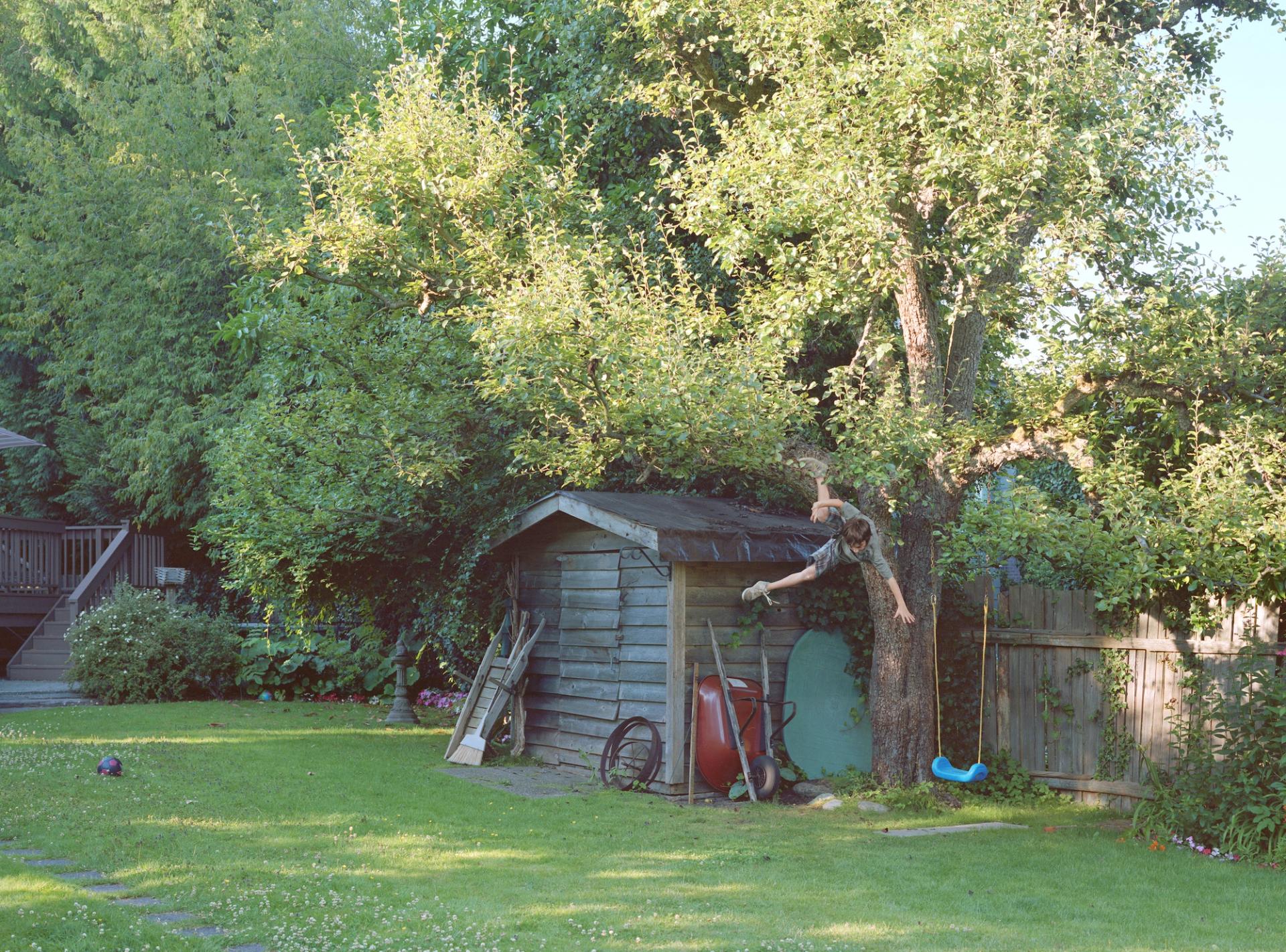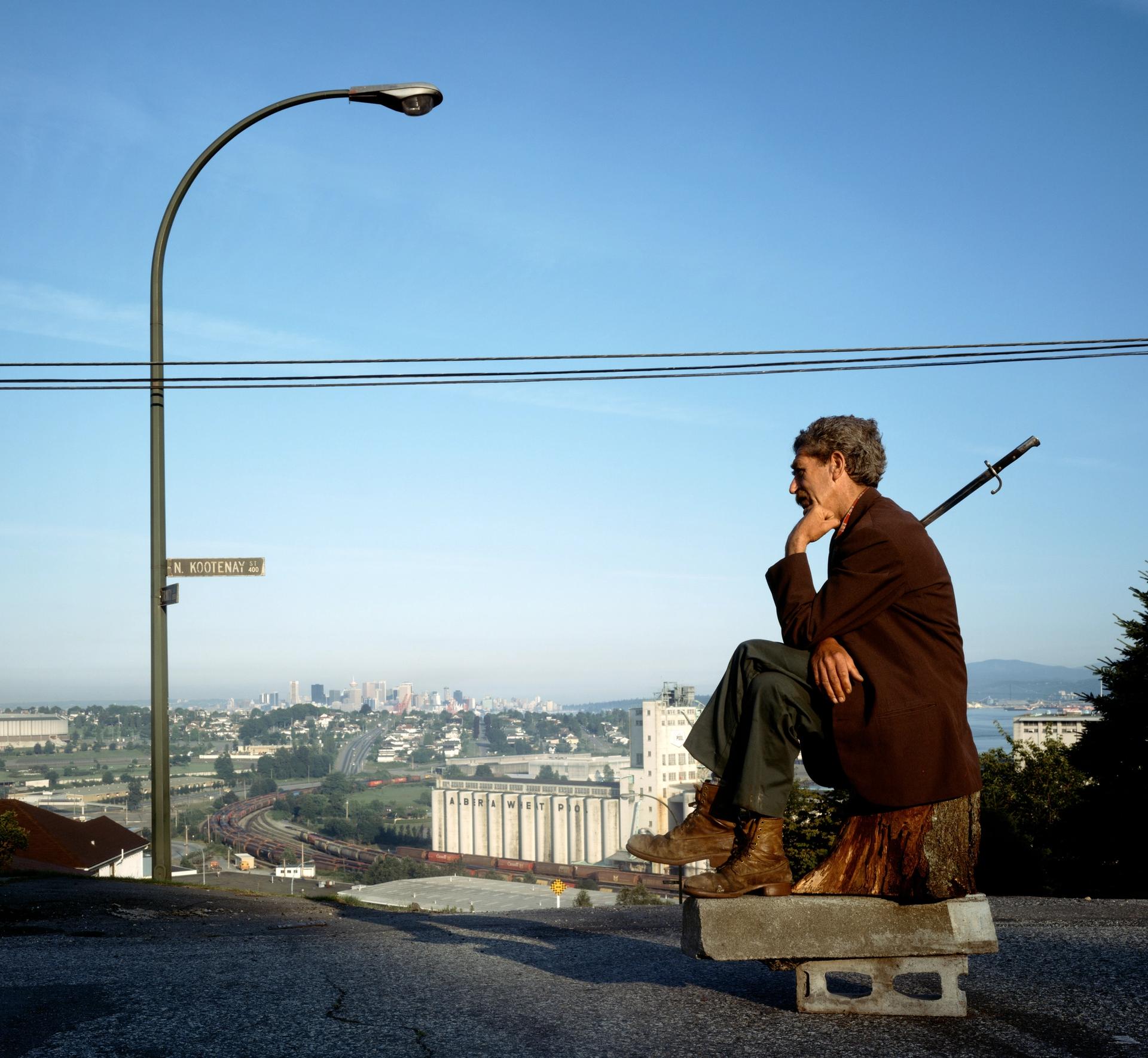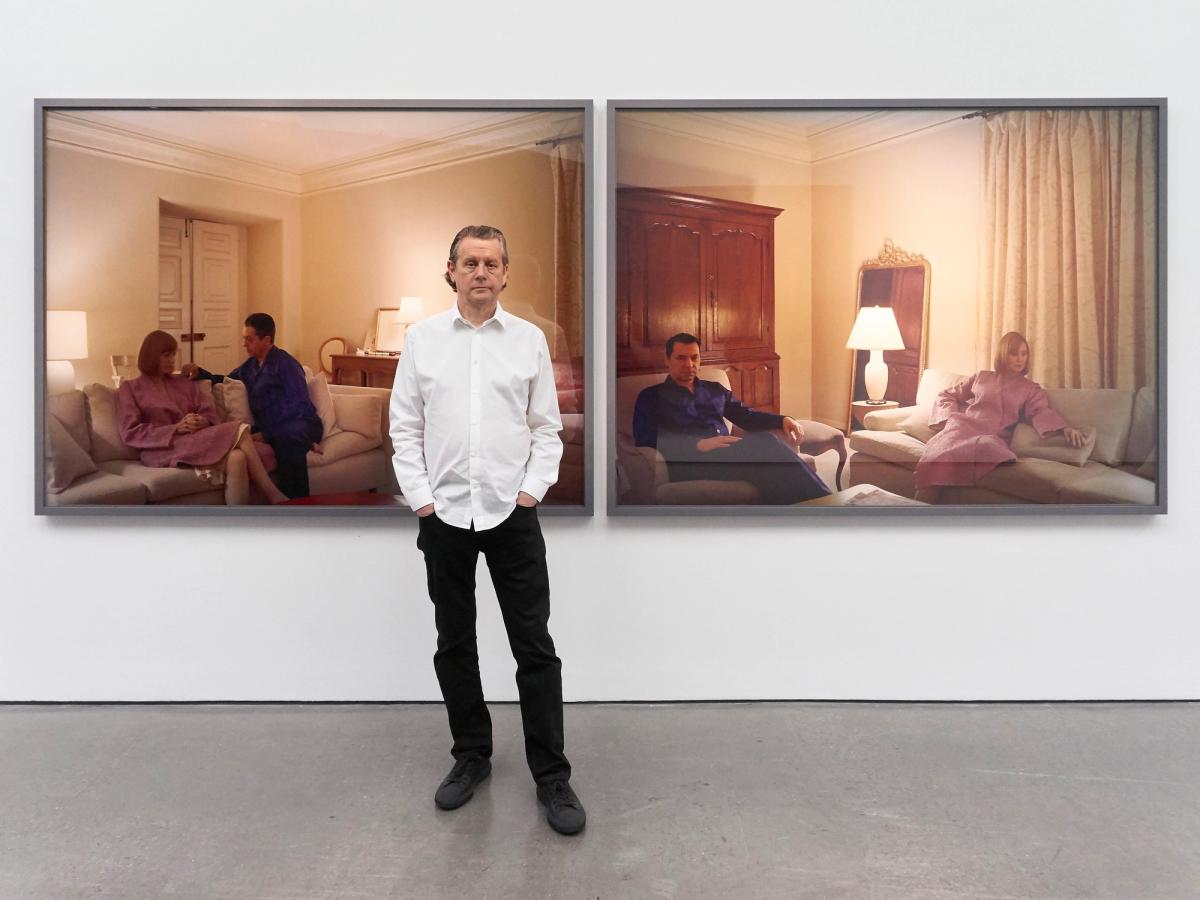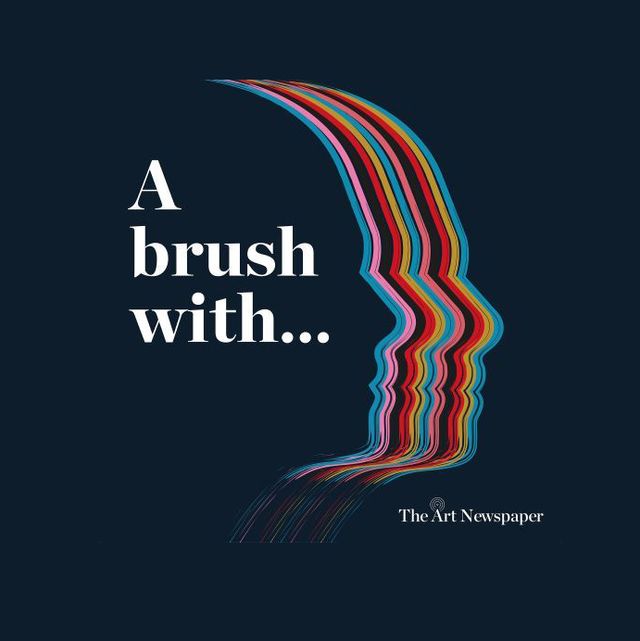Jeff Wall talks to Ben Luke about his influences—from writers to musicians, film-makers and, of course, other artists—and the cultural experiences that have shaped his life and work.
Wall—who was born in 1946 in Vancouver, Canada, where he still lives, though he also works in Los Angeles—makes photographs but aspires to approach his medium with the freedom, range and openness taken for granted by other artforms. Presented on a large scale, his images are enormously varied, from those that are close to reportage; to what he calls “near-documentary” images—tableaux, where he recreates a scene he has witnessed in reality with actors; to elaborately staged environments responding to art or literature; and even what he calls “hallucinations”.

Boy falls from tree, 2010
Jeff Wall
Crucially, he has used the term “cinematographic” to describe his approach, in that his pictures use different degrees of preparation and processing before he presses the shutter and afterwards, thereby applying what Jeff has called “aspects of the arts of dramatisation” to the pictorial practice of still photography. Because of this, his work has long had a fascinating philosophical relationship with truth and reality—two key cornerstones of orthodox claims for his medium’s potency—and what Wall has called “blatant artifice”.
Initially famous for the technique he pioneered in the art world of presenting vast transparencies on lightboxes, he now mostly works with prints, on a similar scale, in both colour and black and white. As he has engaged closely with the history of art, books and film, Jeff has used the term “prose poems” to describe his photographs: that form’s complex structures and language and ability to conjure broad constellations of meanings, perfectly describe his art and how we experience it.

The Thinker, 1986
Jeff Wall
He discusses how comics and Bruegel were his earliest visual inspirations, talks about his responses to historic works by Katsushika Hokusai and Albrecht Dürer, reflects on the “accidents while reading” that have led him to make images responding to literary works by Franz Kafka and Yukio Mishima, among others. Plus he answers some of our usual questions, including the ultimate, “what is art for?”
- Jeff Wall: Life in Pictures, White Cube Bermondsey, London until 12 January 2025; Museum of Art, Architecture and Technology, Lisbon, Portugal, April-August 2025
This podcast is sponsored by Bloomberg Connects, the arts and culture app.
The free app offers access to a vast range of international cultural organisations through a single download, with new guides being added regularly. They include several of the international museums in which Jeff Wall has had important exhibitions, including Tate, featuring the four UK Tate galleries, including Tate Modern, the Museum of Modern Art in New York, the Museum of Contemporary Art in Los Angeles, and the Art Institute of Chicago. If you download Bloomberg Connects, you’ll discover that the guide to the Art Institute includes a video dedicated to the restoration of the frame for the great Francisco de Zurbarán painting of Saint Romanus of Antioch. You can also find audio content on the museum’s current exhibition dedicated to Paul Modersohn-Becker, I Am Me, in which seven of the key works in the show are described in depth.




